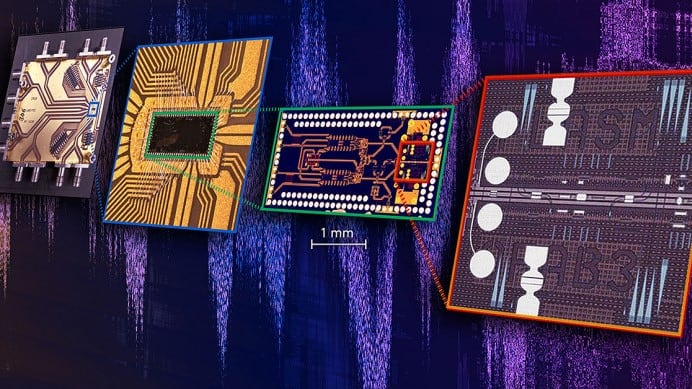New Chip Transfers Data Using Light at Record Breaking Speed
The researchers were able to bring together electronic and light-based elements on the same chip for the first time.
A chip that could revolutionize fiber-optic networks has been manufactured by researchers from ETH Zurich. The monolithic chip that quickly transmits data using light without losing signal quality will increase the speed of data in fiber-optic networks.
In the first, researchers were able to bring together electronic and light-based elements on the same chip, which is a technical breakthrough since, currently, these elements have to be manufactured on separate chips and connected with wires afterward.
Zurich is one such city that uses fiber-optic networks to deliver high-speed internet, TV, and other streaming services; however, by the end of this decade, these optical communication networks may reach their limits, and as Juerg Leuthold, ETH Professor of Photonics and Communications, said, “The rising demand will call for new solutions. The key to this paradigm shift lies in combining electronic and photonic elements on a single chip.” And that was what the researchers did indeed.
The scientists wrote, “Now electronic signals are converted into light signals using separate chips – this is how we lose a significant amount of signal quality. This is what limits the speed of data transmission with the help of light.
“Therefore, we started with the development of a modulator – a component on a chip that generates light of a given intensity, converting electrical signals into light waves. The modulator size is very small in order to avoid loss of quality and intensity during the conversion process.”
The researchers were able to produce small monolithic circuits that have a photonic and an electronic layer, and in order to convert electrical signals to even faster optical ones, the photonic layer was made to contain a plasma intensity modulator that is based on metal structures that direct light to achieve high data rates.



